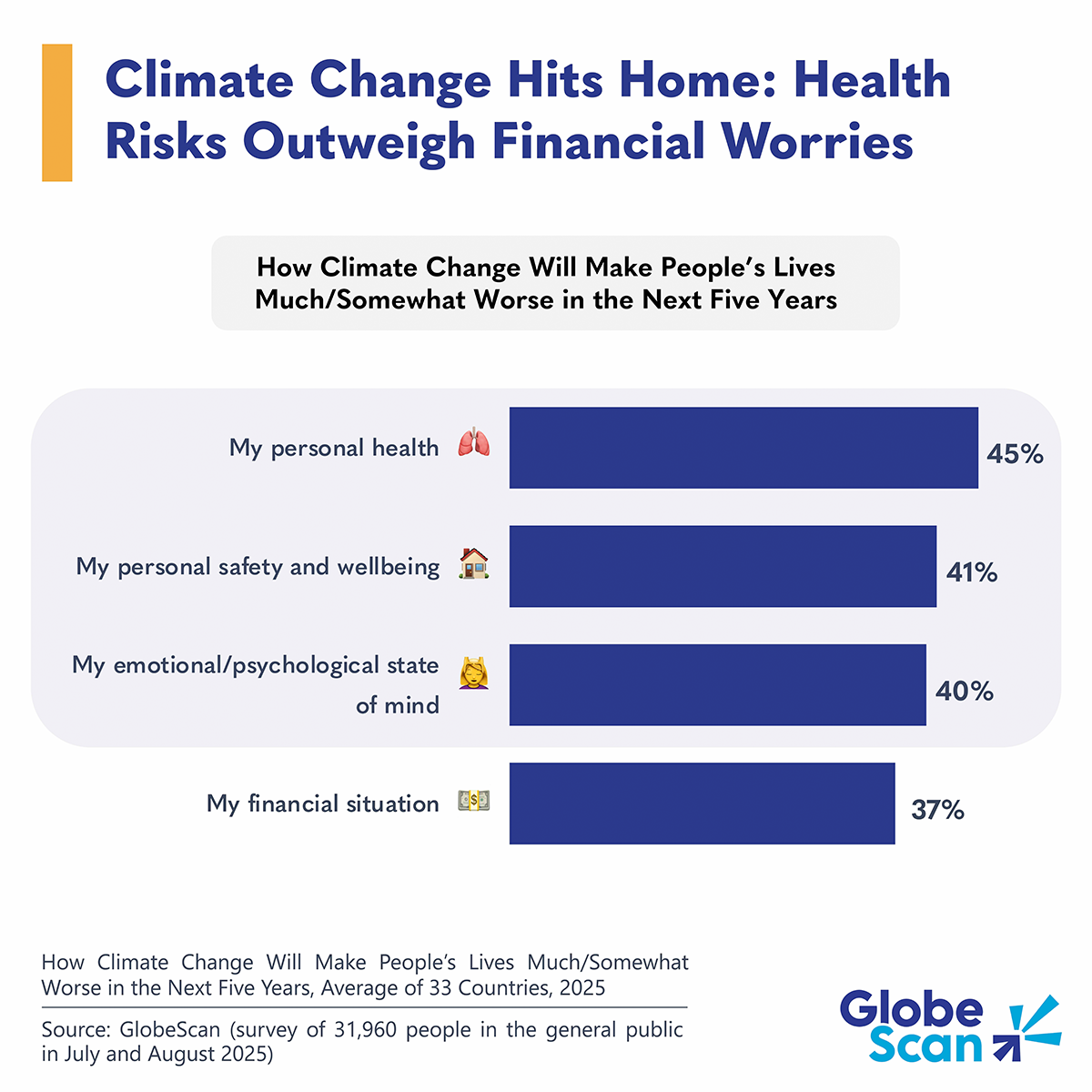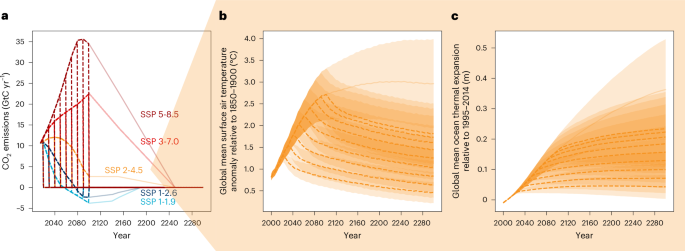Report on West Antarctic Ice Sheet Collapse and Implications for Sustainable Development Goals
1.0 Introduction: A Climate-Driven Threat to the 2030 Agenda
The irreversible retreat of the West Antarctic Ice Sheet (WAIS) represents a critical challenge to the achievement of the United Nations Sustainable Development Goals (SDGs). Scientific evidence indicates that the rate of ice loss has surpassed replenishment from snowfall, initiating a process of collapse with profound implications for global climate stability, human settlements, and economic security. This report analyzes the scientific findings concerning the WAIS and frames them within the context of the 2030 Agenda for Sustainable Development, with a particular focus on SDG 13 (Climate Action), SDG 11 (Sustainable Cities and Communities), and SDG 14 (Life Below Water).
2.0 Scientific Assessment and Sea-Level Rise Projections
Analysis of glaciological data confirms that the WAIS has entered a state of irreversible retreat. The primary concern is the timeline of its collapse and the consequent rise in global sea levels, which directly threatens the viability of coastal regions worldwide.
2.1 Key Projections and Impacts on SDGs
- Initial Collapse Scenario: The loss of peripheral glaciers is projected to raise global sea levels by more than one meter. This directly endangers progress on SDG 11 by threatening to inundate land currently inhabited by 230 million people, jeopardizing housing, infrastructure, and livelihoods.
- Full Collapse Scenario: The complete collapse of the WAIS could raise sea levels by as much as 5 meters, fundamentally altering global coastlines and creating an unprecedented challenge for human adaptation and the sustainability of coastal communities.
- IPCC Worst-Case Scenarios: Under scenarios of continued high greenhouse gas emissions, which contravene the objectives of SDG 13, the Intergovernmental Panel on Climate Change (IPCC) projects a potential sea-level rise of over 2 meters by 2100 and a catastrophic 15 meters by 2300.
2.2 Competing Theories on the Rate of Collapse
The urgency of policy responses under SDG 13 is informed by scientific debate over the mechanisms driving the collapse.
- Marine Ice Sheet Instability (MISI): This process describes how warming ocean water, a direct consequence of climate change, thins floating ice shelves from below. This causes the “grounding line” to retreat inland over bedrock that deepens, accelerating ice flow into the ocean. This mechanism alone points to a multi-century timeline for collapse.
- Marine Ice Cliff Instability (MICI): This controversial theory posits that as ice shelves disintegrate, they expose towering ice cliffs that become structurally unstable and collapse under their own weight. This could trigger a rapid, runaway chain reaction, dramatically shortening the timeline for collapse from centuries to decades and severely compromising the ability of nations to meet adaptation goals under SDG 11 and SDG 9 (Industry, Innovation, and Infrastructure).
3.0 Cascading Impacts Across Multiple Sustainable Development Goals
The collapse of the WAIS extends beyond sea-level rise, creating cascading effects that threaten a wide range of SDGs.
3.1 Threats to Human Security and Equality
- SDG 1 (No Poverty) & SDG 10 (Reduced Inequalities): The displacement of coastal populations will disproportionately affect vulnerable communities in low-lying and developing nations that lack the resources for adaptation, exacerbating poverty and inequality.
- SDG 6 (Clean Water and Sanitation): Rising seas lead to saltwater intrusion into coastal freshwater aquifers, threatening the water security of millions and undermining progress on ensuring access to clean water.
- SDG 9 (Industry, Innovation, and Infrastructure): Critical infrastructure, including ports, power plants, and transportation networks located in coastal zones, faces existential risk, which could disrupt global supply chains and economic stability.
3.2 Environmental and Earth System Consequences
- SDG 14 (Life Below Water): The warming ocean temperatures driving the ice melt are simultaneously causing marine heatwaves, ocean acidification, and ecosystem degradation, directly impacting marine biodiversity and the sustainability of fisheries.
- SDG 13 (Climate Action): The influx of fresh meltwater into the ocean can disrupt ocean circulation patterns, with potential feedback effects on the global climate system that are not yet fully understood.
4.0 Conclusion: The Imperative for Accelerated Climate Action
The scientific consensus confirms that the stability of the West Antarctic Ice Sheet is fundamentally linked to global temperature. While uncertainty remains regarding the precise timeline of its collapse, the direction of change is clear. The potential for rapid, multi-meter sea-level rise this century underscores the profound inadequacy of current global efforts to mitigate climate change.
Achieving the 2030 Agenda for Sustainable Development is contingent upon immediate, ambitious, and sustained action to reduce greenhouse gas emissions in line with the goals of the Paris Agreement. Failure to uphold the commitments of SDG 13 will not only guarantee the eventual collapse of the WAIS but will also render the achievement of SDG 11, SDG 14, and numerous other interconnected goals impossible, leading to irreversible consequences for global stability and human well-being.
Analysis of Sustainable Development Goals in the Article
1. Which SDGs are addressed or connected to the issues highlighted in the article?
The article on the collapse of the West Antarctic Ice Sheet and subsequent sea-level rise directly addresses and connects to several Sustainable Development Goals (SDGs). The primary themes of climate change impacts, threats to human settlements, and changes in the marine environment establish these connections.
-
SDG 13: Climate Action
This is the most central SDG to the article. The entire discussion revolves around the consequences of climate change, driven by “greenhouse gas emissions.” The article details the “irreversible retreat” of glaciers due to global warming, which is the core focus of SDG 13 (Take urgent action to combat climate change and its impacts).
-
SDG 11: Sustainable Cities and Communities
The article explicitly links sea-level rise to the viability of human settlements. It states that the initial collapse would “inundating land currently inhabited by 230 million people” and warns that “major population centers — New York City, New Orleans, Miami and Houston — may not be ready.” This directly relates to SDG 11’s aim to make cities and human settlements inclusive, safe, resilient, and sustainable, especially in the face of climate-related disasters.
-
SDG 14: Life Below Water
The mechanism of ice sheet collapse described in the article is intrinsically linked to the ocean. It highlights how the “relatively warm sea works its way below the protective shelves, it thins them from below” and mentions the “thermal expansion of seawater” as a contributor to sea-level rise. These points connect to SDG 14’s goal to conserve and sustainably use the oceans, seas, and marine resources, as warming oceans are a primary driver of the discussed threats.
2. What specific targets under those SDGs can be identified based on the article’s content?
Based on the issues discussed, several specific SDG targets can be identified:
-
SDG 13: Climate Action
- Target 13.1: Strengthen resilience and adaptive capacity to climate-related hazards and natural disasters in all countries. The article’s central theme is the potential for catastrophic sea-level rise, a major climate-related hazard. The warning that humanity’s “ability to respond” could be outpaced by rapid destabilization underscores the urgent need for enhanced resilience and adaptation.
- Target 13.2: Integrate climate change measures into national policies, strategies and planning. The article implicitly calls for such integration by presenting different outcomes based on “future emissions” and contrasting a high-emission scenario with potential mitigation. The entire scientific debate it describes is meant to inform policy and planning regarding climate change.
-
SDG 11: Sustainable Cities and Communities
- Target 11.5: By 2030, significantly reduce the number of deaths and the number of people affected and substantially decrease the direct economic losses relative to global gross domestic product caused by disasters, including water-related disasters, with a focus on protecting the poor and people in vulnerable situations. The article directly quantifies the number of people affected (“230 million people”) and names major cities whose infrastructure and populations are at risk, highlighting the massive potential for economic and human losses from a water-related disaster (sea-level rise).
- Target 11.b: By 2020, substantially increase the number of cities and human settlements adopting and implementing integrated policies and plans towards inclusion, resource efficiency, mitigation and adaptation to climate change, resilience to disasters. The statement that major cities “may not be ready” points directly to a deficit in the adaptation and resilience plans that this target promotes.
-
SDG 14: Life Below Water
- Target 14.2: By 2020, sustainably manage and protect marine and coastal ecosystems to avoid significant adverse impacts. The article describes a significant adverse impact on the Antarctic marine ecosystem, where warming seawater is causing the collapse of ice shelves, fundamentally altering the coastal environment where the ice sheet meets the ocean.
3. Are there any indicators mentioned or implied in the article that can be used to measure progress towards the identified targets?
Yes, the article mentions and implies several quantitative and qualitative indicators that can be used to measure progress, or lack thereof, towards the identified targets.
- Global Sea-Level Rise: This is the most prominent indicator in the article. Specific measurements are cited, such as a potential rise of “more than a meter,” “over 2 meters” by 2100, and up to “15 meters by 2300.” Tracking the actual rate of sea-level rise is a direct measure of the severity of climate change impacts (relevant to Target 13.1).
- Rate of Greenhouse Gas Emissions: The article frames the entire problem around emissions, stating, “If greenhouse gas emissions continue unabated, seas would rise a staggering 15 meters by 2300.” It also notes, “The one thing we do know is that the more carbon dioxide we put into the atmosphere, the greater the risk.” Therefore, the concentration and rate of emissions are primary indicators for measuring mitigation efforts (relevant to Target 13.2).
- Rate of Ice Sheet and Glacier Mass Loss: The article is based on observations that glaciers are “losing ice faster than snowfall could replenish them” and that grounding lines are in “irreversible retreat.” Satellite observations and geophysical data that track the rate of ice loss from Antarctica and Greenland are critical indicators of the physical impacts of climate change.
- Number of People and Value of Assets in At-Risk Coastal Areas: The article provides a specific number: “land currently inhabited by 230 million people.” This figure serves as a baseline indicator for measuring vulnerability and the scale of adaptation required. Tracking the number of people protected by coastal adaptation measures would be an indicator of progress towards Target 11.5.
- Ocean Temperature and Thermal Expansion: The article identifies the “relatively warm sea” and “thermal expansion of seawater” as key drivers of ice melt and sea-level rise. Monitoring changes in ocean heat content is a direct indicator of the stress on marine ecosystems and a key factor in predicting future sea-level rise (relevant to Target 14.2).
4. Summary Table of SDGs, Targets, and Indicators
| SDGs | Targets | Indicators Identified in the Article |
|---|---|---|
| SDG 13: Climate Action |
|
|
| SDG 11: Sustainable Cities and Communities |
|
|
| SDG 14: Life Below Water |
|
|
Source: quantamagazine.org







